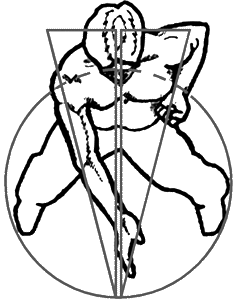Pak Sao
AKA – “slapping hand”
The Pak Sao is one of the fundamental Wing Chun blocks. The practitioner uses the palm of the hand to deflect attacks past the body. The Pak Sau is a variation and refinement of a natural human reflex many people already possess..
Tan Sao
AKA – “dispersing hand”
The Tan Sau sometimes spelled Tann Sao is one of the main basic positions in Wing Chun, and translates to mean 'receiving hand.' It features predominantly in Sil Lim Tau (the first empty hand form). The technique involves keeping correct elbow position and alignment, relative to the opponent. It is important that the Tan sau has forward movement, so that it meets and deflects an attack.
Bong Sao
AKA –“wing arm”
The Bong Sao or wing arm is a deflecting technique that features quite heavily in the Wing Chun forms. It is performed by rolling the forearm out and the raising the elbow up.
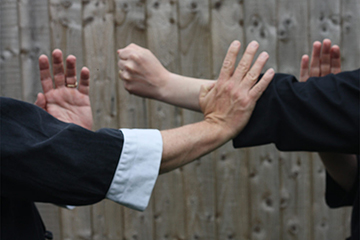
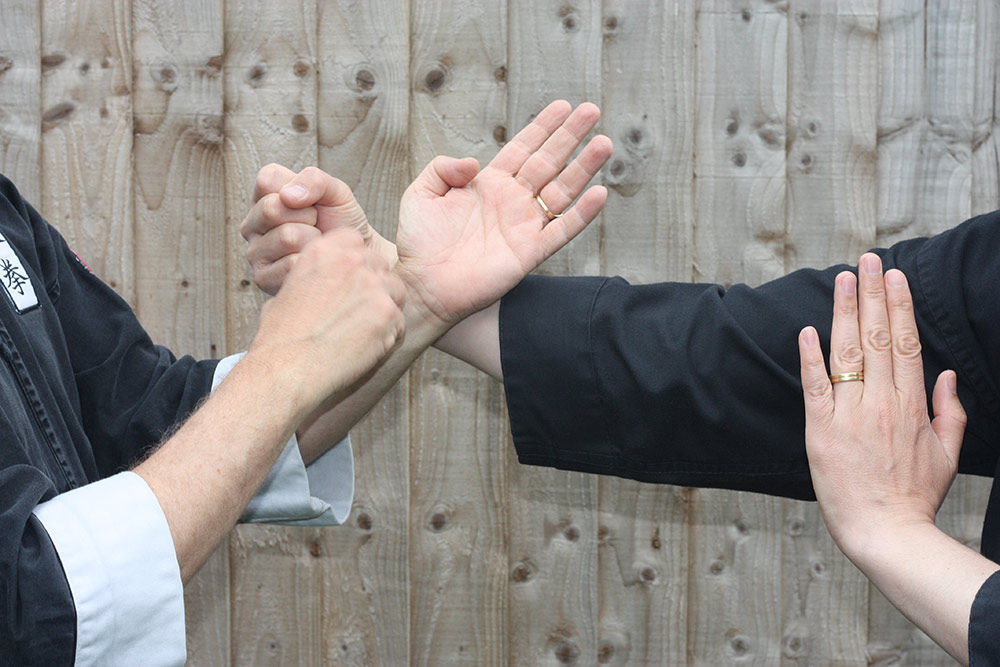
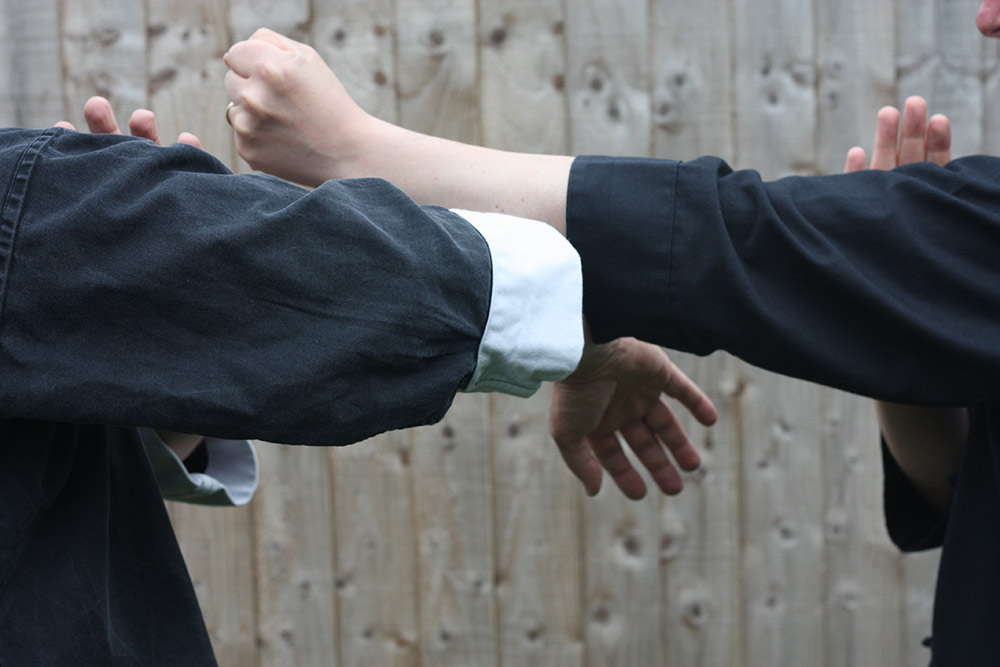
GAUN Sao
AKA – ""
Jut Sao
AKA – “choking hand”
Jut Sau is short sharp deflecting technique used in Wing Chun to deal with punches. Jut Sau is similar to a Pak Sau only it uses the inside of the wrist instead of the palm to deflect, The elbow must be kept lower than the wrist in order for Jut Sau to work.
Biu (Bute) Sao
AKA – “darting hand” or “thrusting fingers”.
The Biu Sao or thrusting fingers is one of the many Wing Chun moves which can be use both as a block and as a strike. It can be used to deflect any attack around shoulder height or above. Or it can be use to strike to the eyes and throat.
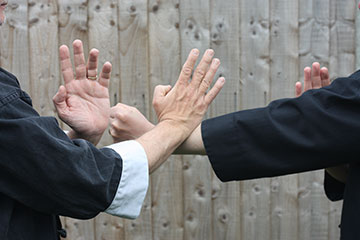
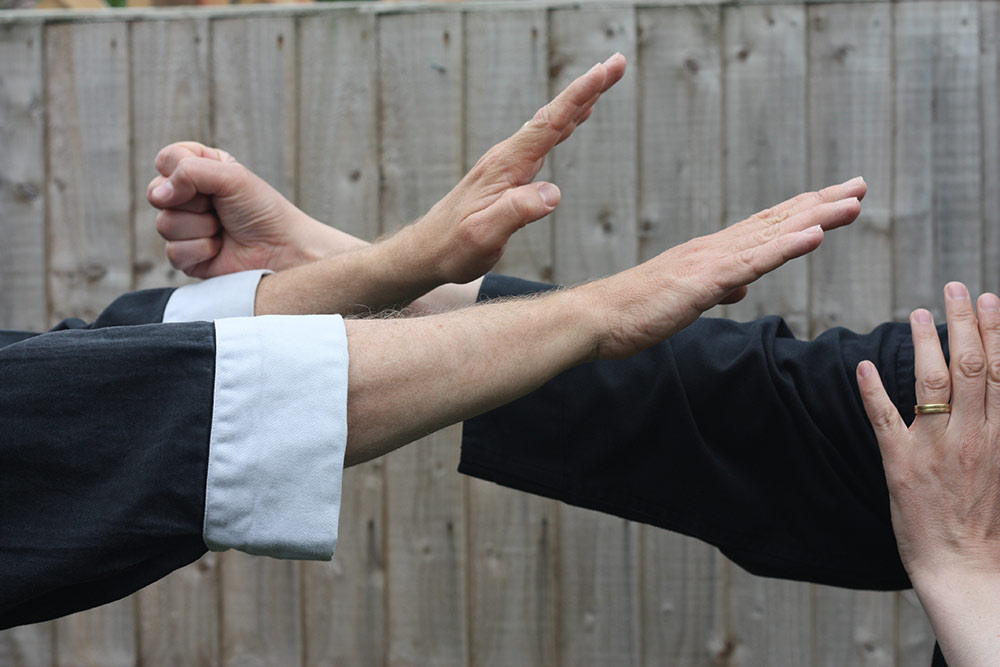
Kan Sao
AKA - "Scissor Block"
Kwan Sao
AKA – “cultivating arm” or “splitting hand”
Kwan Sau, also sometimes called Guan Sao roughly translates to splitting hand/arm and usually refers to a low block. When done in conjunction with a high block (inside Tan Sau) it is often still referred to as Kwan Sau (splitting block).
Kwan Sau is a relatively complex rotating arm motion which can be used to block or roll out of a trap and is found in the dummy form.
Two Handed Block
AKA - "Two handed block"
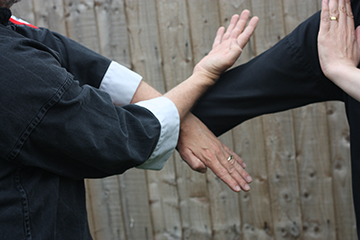
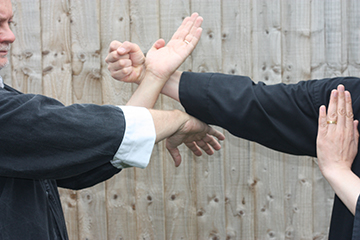
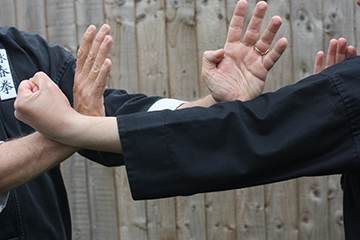
Po Pai
Po Pai jeung or more often referred to simply as Po Pai it essentially has three uses: an indication of striking, a push, a strike. Each of these is important both to training and to actual fighting.
Gum Sao
AKA ‘pinning hand”
Gum Sau, or pinning hand is used to deflect low attacks like kicks and knee strikes to the the ribs. It is also used to pin the opponents hands in Chi Sau.
Tok Sau
AKA – “lifting hand”
Tok Sau or lifting hand can be used to lift an opponents guard at the elbow in order to strike them or to throw them off balance.
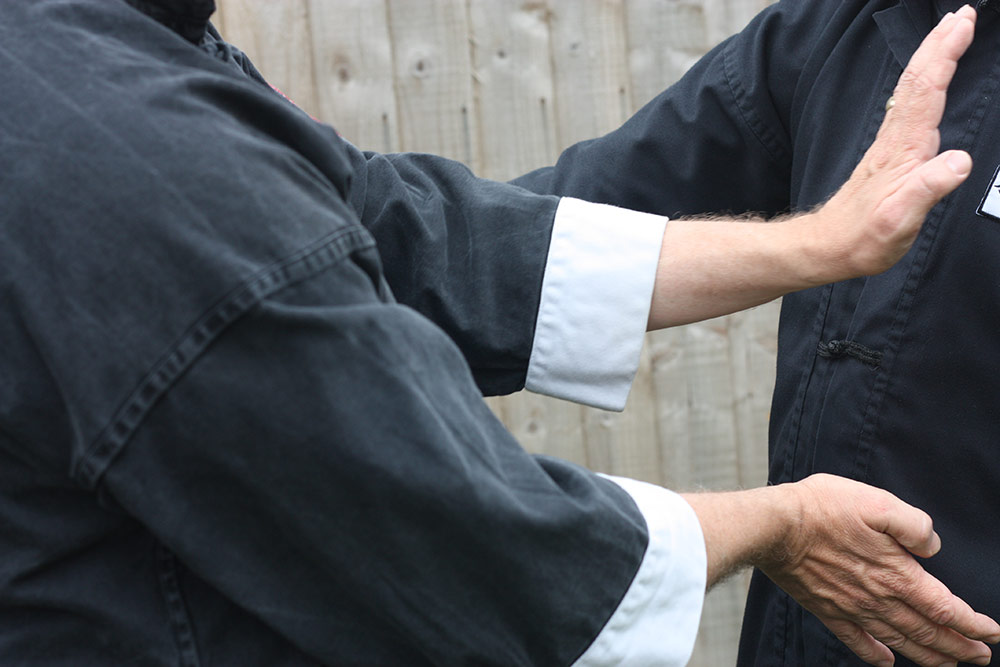
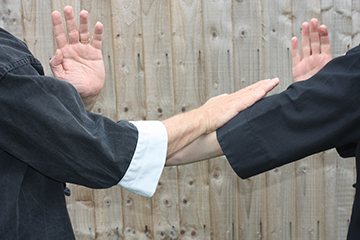
Tok Pic Here
Lap Sao
AKA “pulling hand”
The Lap Sau is an interesting technique that destroys the balance and structure of an opponent using a short sharp pull. It has many uses most of which will be accompanied by a strike to deliver devastating force. In Wing Chun it is important to never overcommit oneself to a technique the Lap Sau is a good example of this. The pull down is sharp and short action and is released immediately to follow with a strike.
Lan Sau
AKA “bar arm”
The Lan Sau or bar arm, is a lifting block / bridging technique. It looks similar to the Bong Sau but unlike the Bong Sau the arm forearm is level with the shoulders and more or less parallel to the body and the rotation in the forearm is up not across.
Other?
Lap Sao Pic
Lan Sau pic
Punch
The Wing Chun punch is different from a traditional Karate or boxers punch, the punch should be down your center line, with your fist upright so your thumb is on top. This movement and positioning allows Wing Chun to generate enough power to perform the Wing Chun one inch punch.
Centre Line
Wing Chun places a great deal of emphasis on focusing on your center line, as long as you are facing your opponent, the center line should be the shortest route, between them and you, it is both used as a line of attack and also should be well guarded, it is essentially the high ground of Wing Chun.

